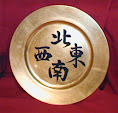Now without Magic, you can't really talk about a fantasy role-playing game, so this was really still a big hole in the project. In September, we received word that Steve Crompton was about to start laying out pages for the much revised section about Magic.
Well, a few days a go we finally received a link to download the dT&T chapters about Magic, all 73 pages of them. Basically, this latest PDF corresponds to the missing 'Section 9' from the summary of the draft version of deluxe Tunnels & Trolls.
Detailed contents of the PDF:
- Magic IQ & DEX requirements per Spell level,
- Generalities about spells,
- Generalities about kremm (Power/mana in T&T parlance),
- Technical intricacies about spells (damage, learning, stacking…),
- Schools of Magic — This is pretty new stuff if I'm not mistaken. There are ten Colleges of Magic; each spell may be taught in one or several of these colleges. My understanding after having merely skimmed through the PDF is that these colleges are only there for added flavour. There is an optional rule, however, to allow magicians to specialise in a given college of Magic; basically, this functions as a Talent that enables a Conjurer, say, to cast Conjuration spells at a reduced cost.
- Spell Book (35 pages),
- Equipment for magicians (staves, wands…),
- Creating magical items (amulets, potions, talismans…),
- Kremm batteries — I believe these are new. They basically function like the original RuneQuest's crystals and matrices, so this is über cool,
- Creating new spells.
The ten Colleges of Magic are (notice how they all start with the letter 'C'):
- Clairvoyant [it should be called Clairvoyance, by the way]
- Combat
- Communication
- Concealment
- Conformation [all spells related with metamorphoses]
- Conjuration
- Construction
- Conveyance [all spells related with movement]
- Cosmic [catch-all category]
- Curative
Each college comes with a neat icon used to illustrate the relationship of the various spells with the ten colleges throughout the Spell Book.
At this point, I believe we backers have received everything related with Magic, except the Elaborations section (again from the summary of the draft version of dT&T).












